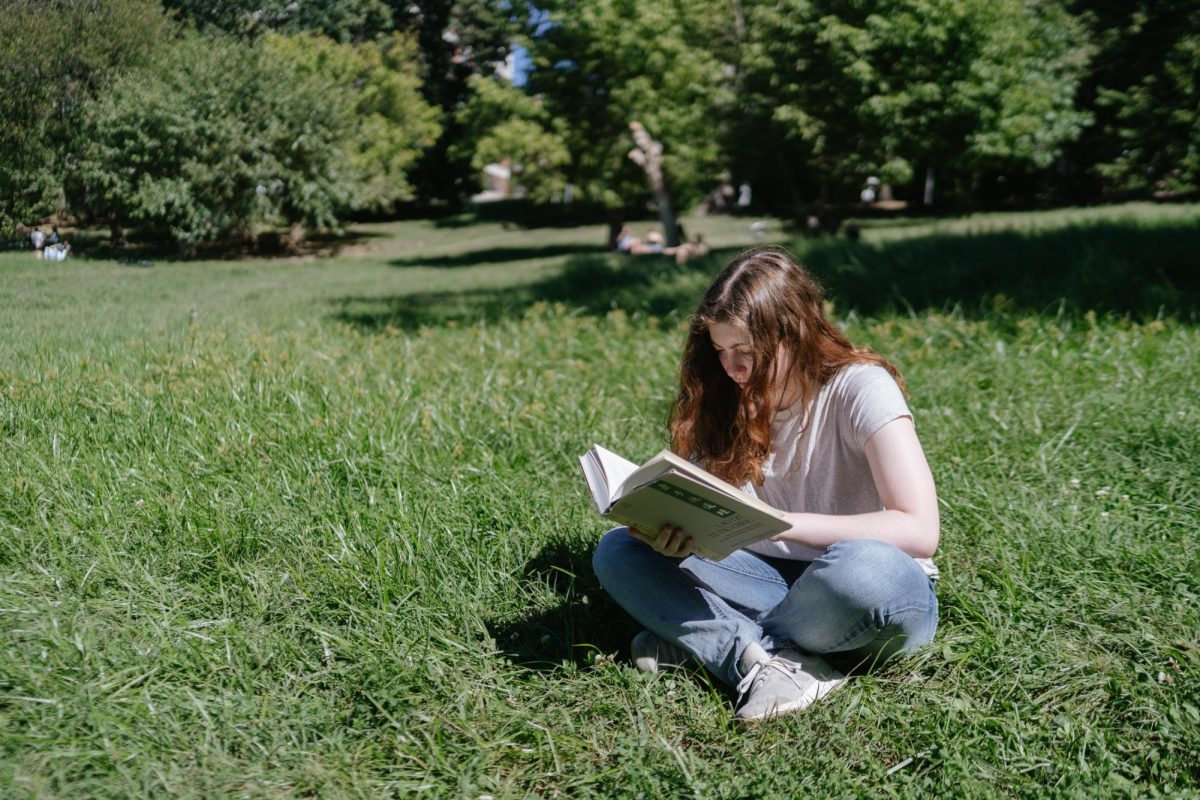The semester just started, and GW students have already completed a rite of passage for living in the District: surviving the August humidity.
But temperatures are staying high and are forecasted to stay that way through October. To take advantage of the sun-drenched start to the autumn season, take to D.C.’s streets and trails for these outdoor refuges.
Break open the books under the sun
The dreariness of Gelman Library’s gloomy fluorescent lighting might drive you to grind through your work so you can flee. But consider wandering outside the library and into the less foreboding sunlight to do your class readings while soaking up the remaining summer sun.
A 20-minute walk from campus, Rock Creek Park includes nearly 2,000 acres of chestnut oaks and is home to white-tailed deer and red foxes. Lounge up against a tree while reading Karl Marx’s “Capital” — after all, reading Marx in nature is a bit less ironic than studying him in a giant concrete building.
If you prefer your great outdoors a little more man-made, pay a visit to the roof of the John F. Kennedy Center for the Performing Arts. The center’s outdoor promenade is about a 10-minute walk from campus and features views of the Potomac River and plenty of seating. Head over for a dusk study session as the sunset turns the sky purple and gold above the skyline of corporate Arlington.
Shop for autumn delights at farmers markets
Say goodbye to summer with a final fresh peach and say hello to fall with a crisp apple from one of the many local farmers markets. Stop by the Dupont Circle Farmers Market, a student favorite for its proximity to campus, every Sunday from 8:30 a.m. to 1:30 p.m. for autumnal sweet treats like apple cider and pumpkin donuts.
If you find yourself in desperate need of fall flavors midweek, fear not — the FRESHFARM Foggy Bottom Farmers Market and Georgetown’s Rose Park Farmers Market are open on Wednesdays from 3 to 7 p.m. Grab a pumpkin or seasonal flower bouquet to brighten up your room.
Embrace D.C.’s spirit at neighborhood festivals
The brutalist architecture of the State Department in Foggy Bottom and limited campus green spaces won’t suffice as your only outdoor exposure this fall. Leave the neighborhood to gallivant around one of the District’s monthly neighborhood festivals to witness the city’s true range of food and arts culture.
The H Street Festival, which will take over its namesake neighborhood in Northeast D.C. on Sept. 21, is a 12-block amalgamation of anything that can fall under the umbrella of the arts. The festival, which will take place just east of Union Station, features vendors selling local vintage tchotchkes and dance performances to warm up from the first chills of autumn air. Visitors should expect to fill their stomachs with desserts or full meals — the celebration has in the past featured food vendors like strawberry popsicles and Caribbean jerk chicken.
If you’d prefer a festival closer to campus, the District will showcase a nighttime art exhibition in all eight wards across D.C. this month. Between Sept. 27 and 28, Art All Night will do just what its name suggests: decorate D.C. with art, all night long, from 7 p.m. to 3 a.m.
The free festival will have outdoor pop-ups on everything from new literature to indie art films in each ward, with more specific locations to be revealed later in the month. An accompanying festival called Dine All Night will run concurrently with the art component, ensuring festival visitors can enjoy the art with an ice cream cone in hand.
See green become yellow, red and orange
Extended summer warmth in D.C. isn’t just impacting the pastimes of college students when the sun sets — the stress the heat causes trees may cause fall foliage to burst into golden hues earlier, if for a shorter time. The District is expected to see trees start to change colors in early October, before peaking later that month.
D.C. might not have the same famed arrays of color-changing leaves as New England, but the District still holds areas to see the shades of autumn emerge in full force. While the Tidal Basin is more famous for the pinks that platoon its cherry blossom trees in the spring, the mass of foliage that surrounds the Jefferson Memorial can still draw a crowd as leaves change color in autumn.
If you’d rather take a real adventure across the city before the possibility of a few inches of snow shutting D.C. down entirely, visit the National Arboretum, about 50 minutes by Metro and bus from campus. The gardens contain more than 150 maple trees, giving a taste of the northeast fall foliage to the half of GW from New Jersey missing home.





